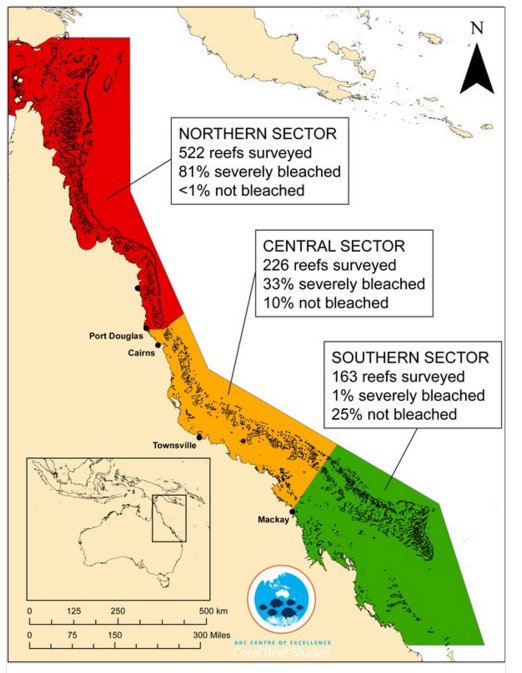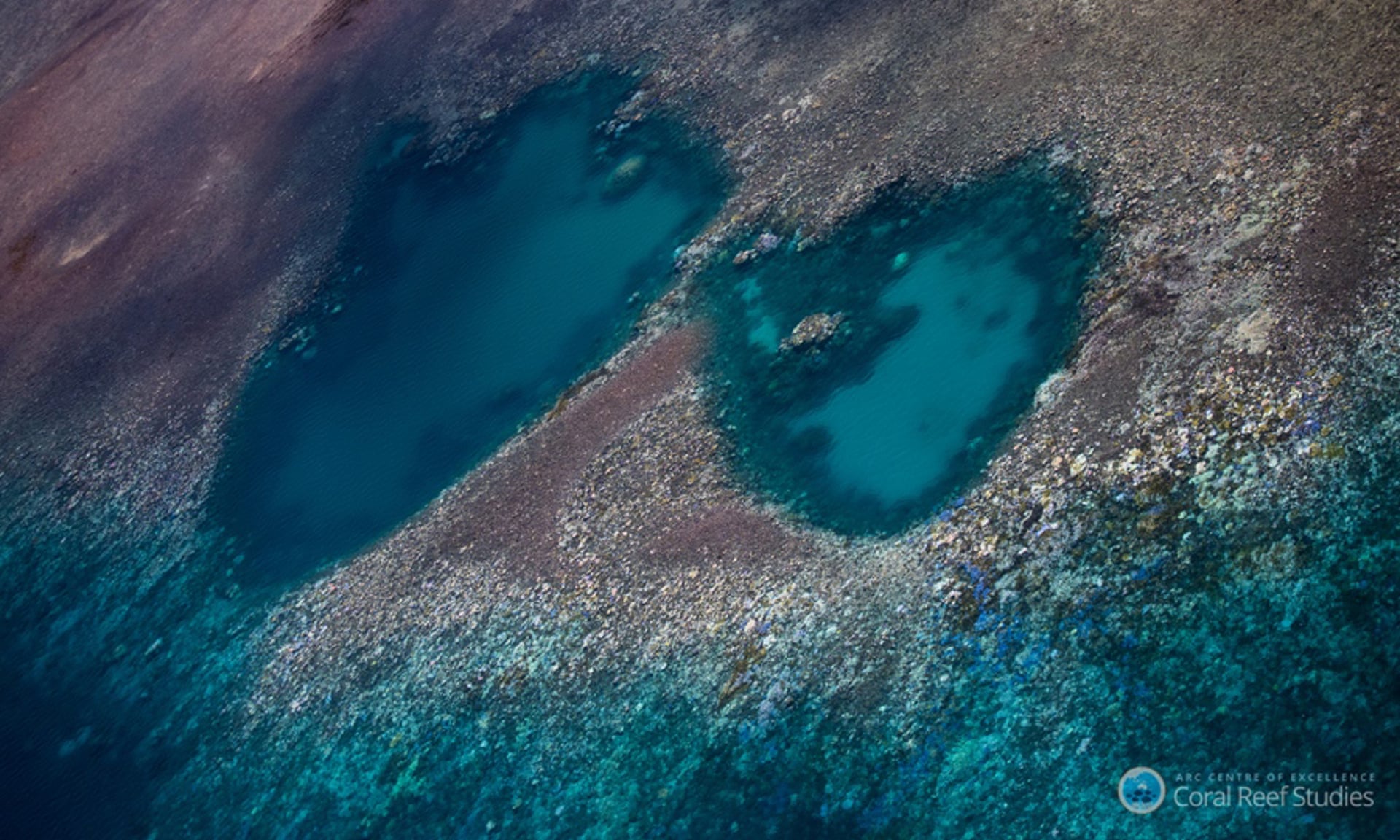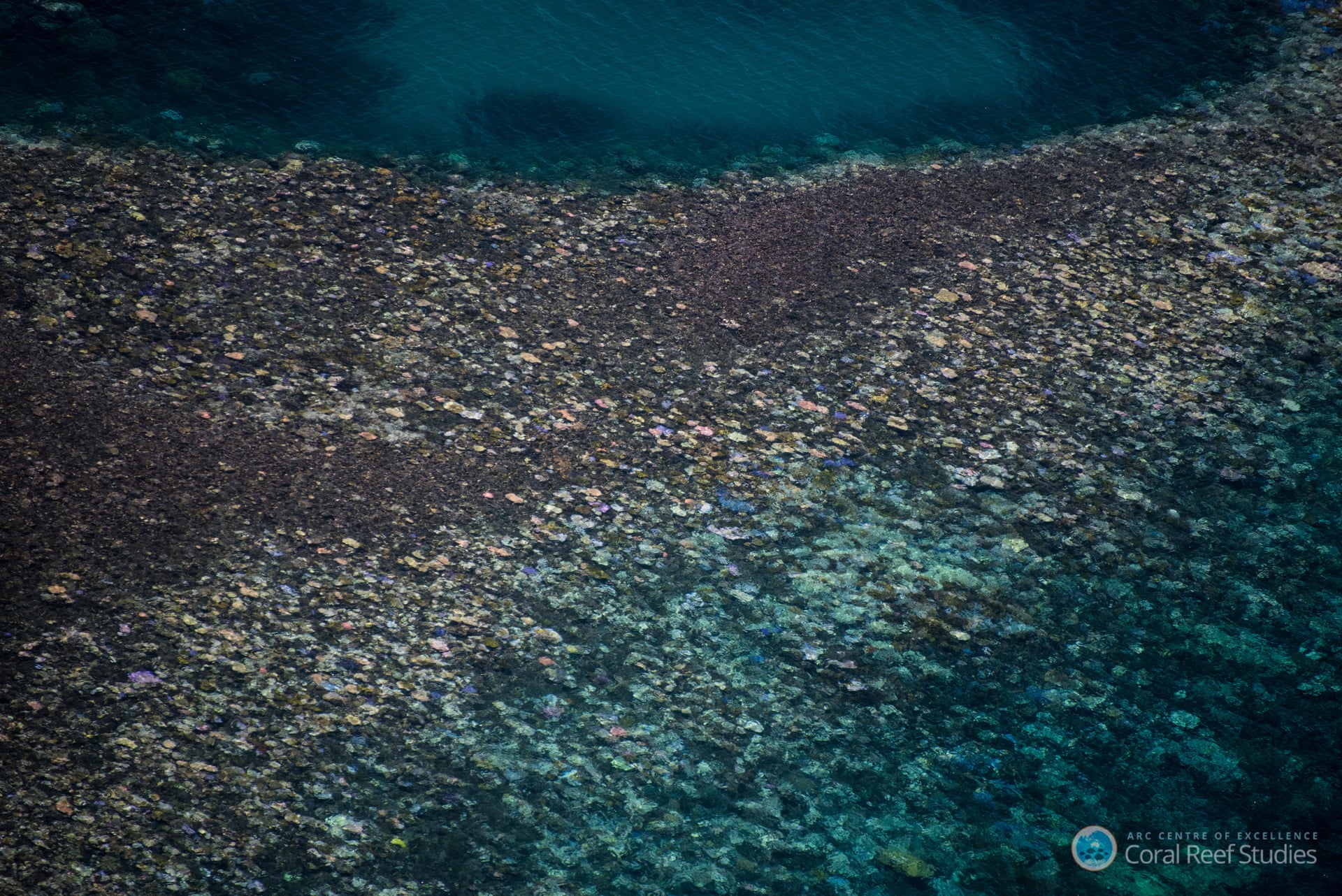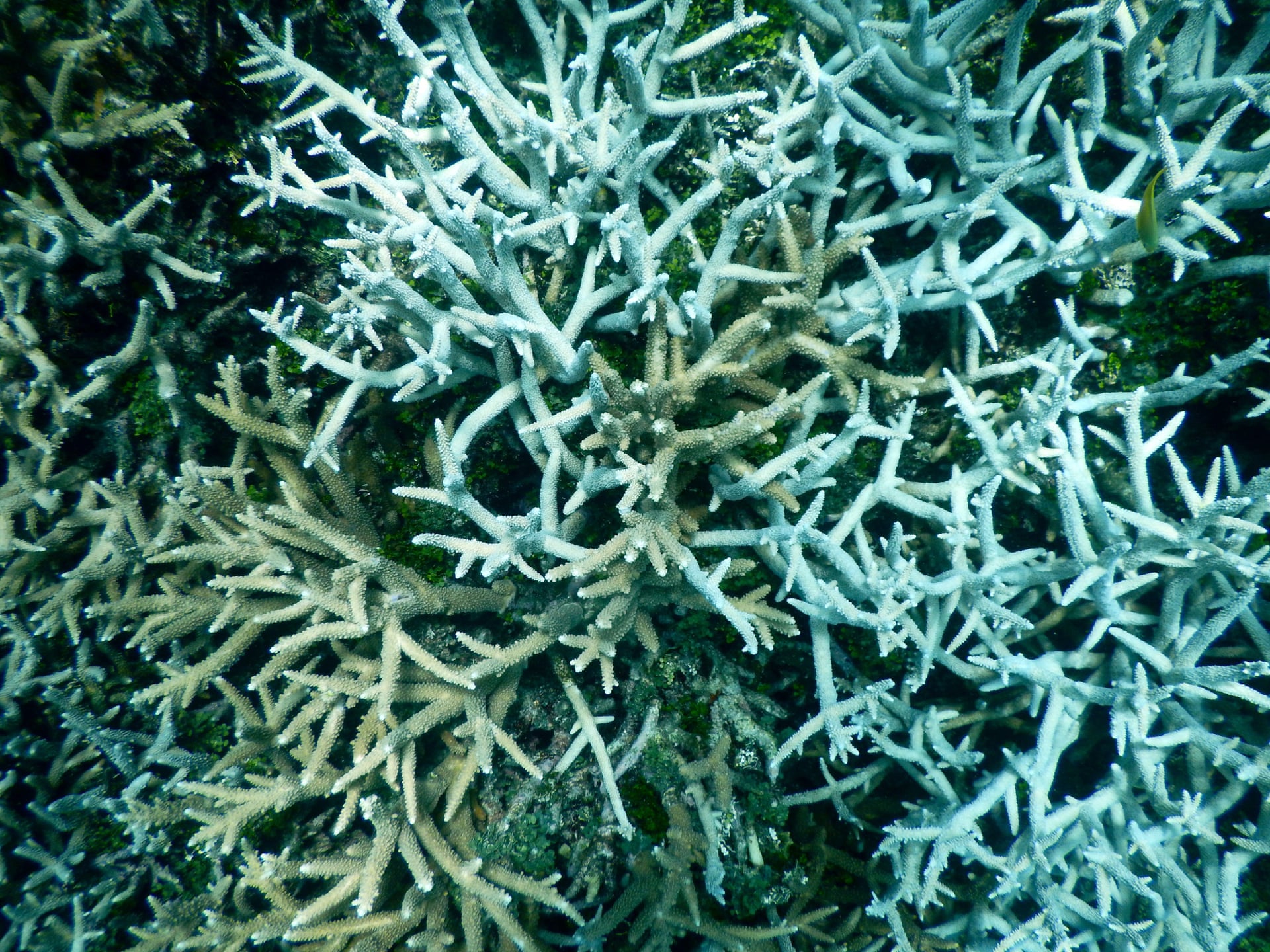Aerial Survey of Great Barrier Reef Bleaching
Credit: ARC Center of Excellence for Coral Reef Studies
Comprehensive aerial survey reveals full extent of the devastation caused by abnormally warm ocean temperatures
Almost 93% of reefs on the Great Barrier Reef have been hit by coral bleaching, according to a comprehensive survey revealing the full extent of the devastation caused by abnormally warm ocean temperatures sweeping the globe.
There have only been three mass bleaching events recorded on the reef , and all of them have happened since 1998.
Why do coral bleach ?
The Guardian graphic
Scientists say this episode is the worst they’ve ever seen.
The world is in the midst of a global bleaching event, which is a result of a pulse of warm water flowing around the Pacific Ocean caused by El Niño, and the background global warming caused by man-made greenhouse gas emissions.
Corals bleach when they experience temperatures above their normal summer maximum for a month or two.
The situation is made worse if there are few clouds, and a high level of UV radiation blasts the coral.
The vast majority of the world's largest reef ecosystem has been ravaged by coral bleaching
Prof Terry Hughes, from James Cook University and head of the National Coral Bleaching taskforce, said only 68 of those reefs escaped bleaching entirely.
As Guardian Australia reported last week, more than half the surveyed reefs have been severely bleached, with as many as 81% of reefs north of Port Douglas experiencing severe bleaching.
If coral remains bleached for an extended period, it is likely to die.
Hughes said that the northern region is already seeing mortality as high as 50%, and he expected that at some reefs it will exceed 90%.
In the central section between Port Douglas and Mackay, a third of the reefs are severely bleached and 57% have seen moderate or minor bleaching.
South of Mackay, 1% of reefs are severely bleached, but even there, only a quarter of the reefs have escaped bleaching entirely.
Coral bleaching on the Great Barrier Reef shows up as white and yellow
patches.
The aerial survey has covered 911 individual reefs aong the
2,300km structure.
Photograph: Terry Hughes/ARC Centre of Excellence for Coral Reef Studies
Coral bleaching on the Great Barrier Reef shows up as white and yellow
patches visible from aerial surveys.
Photograph: Terry Hughes/ARC Centre
of Excellence for Coral Reef Studies
“By that metric, this event is five times stronger.”
And in those two years, only 18% of reefs were severely bleached.
“This time it’s 55%.”
“We’ve never seen anything like this scale of bleaching before. In the northern Great Barrier Reef, it’s like 10 cyclones have come ashore all at once,” said Hughes.
“Towards the southern end, most of the reefs have minor to moderate bleaching and should soon recover.”
Bleached coral around Heron Island on the Great Barrier Reef.
Photograph: Ove Hoegh-Guldberg/University of Queensland
“This time, the southern third of the Great Barrier Reef was fortunately cooled down late in summer by a period of cloudy weather caused by ex-cyclone Winston, after it passed over Fiji and came to us as a rain depression. The 2016 footprint could have been much worse.”
The aerial work is being confirmed by teams of divers who are examining the coral up-close.
Hughes said there have been 100 people underwater for the past month, and so far they’ve collected data from about 150 reefs.
Links :
- The Guardian : Devastating global coral bleaching event could hit Great Barrier Reef next / Great Barrier Reef: the scale of bleaching has the most sober scientists worried / Great Barrier Reef: new chapter opens in the fight to save natural wonder from mining
- Gizmodo : This is why the Great Barrier is dying
- GeoGarage blog :Great Barrier Reef has lost half its corals since 1985, new study says / Extreme heat bleaches coral, and threat is seen






WP : Scientists say there’s basically no way the Great Barrier Reef was bleached naturally
ReplyDelete